
Cochylis nana is a moth of the family Tortricidae. It was described by Adrian Hardy Haworth in 1811. It is found in Europe, Amur Oblast of Russia and Nova Scotia in Canada.

Celypha striana is a moth of the family Tortricidae. It is the type species of its genus Celypha.

Helminthotheca echioides, known as bristlyoxtongue, is a sprawling annual or biennial herb native to Europe and North Africa. It was originally placed within the genus Picris but is often separated within the small genus Helminthotheca alongside a few other plants which also have the distinctive outer row of bracts around the flowerheads. It is a ruderal plant, found on waste ground and agricultural soils around the world, and in some places it is considered a troublesome weed.
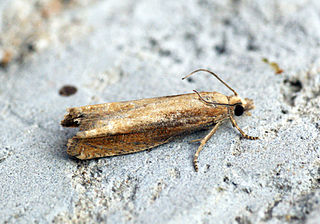
Eucosma obumbratana is a moth of the family Tortricidae. It is found in Europe, China (Jilin), Russia and Kazakhstan.

Epinotia tenerana, the nut bud moth or alder tortricid, is a moth of the family Tortricidae.

Cochylis hybridella is a moth species of the family Tortricidae. It is found in most of Europe, the Near East, China, Japan, Korea and Russia.
Cochylis fusca is a moth of the family Tortricidae. It is known from Mississippi, Illinois, Indiana, Missouri, Ohio and Pennsylvania.
Cochylis virilia is a moth of the family Tortricidae. It is only known from Maine.

Aethes rubigana, the burdock conch, is a moth of the family Tortricidae. It was described by Treitschke in 1830. It is found in most of Europe, except the Iberian Peninsula and part of the Balkan Peninsula. Outside of Europe, it is found in China, Japan and Russia.

Cochylichroa atricapitana, the black-headed conch, is a moth of the family Tortricidae. It is found in China (Xinjiang) and the eastern Palearctic and most of Europe.
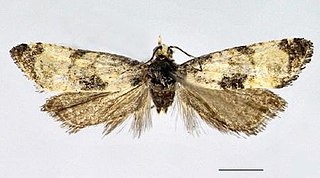
Cochylis dubitana, the little conch, is a moth of the family Tortricidae. It is found in China (Heilongjiang) and most of Europe. and the Caucasus. It is also found in North America, where it has been recorded from Colorado, Maine, Ontario and Washington.

Endothenia marginana, the downland marble, is a moth of the family Tortricidae. It was described by Adrian Hardy Haworth in 1811. It is found in almost all of Europe and across the Palearctic.

Grapholita janthinana, the hawthorn leafroller, is a moth of the family Tortricidae. It was described by Philogène Auguste Joseph Duponchel in 1843. It is found in most of Europe, except most of the Balkan Peninsula, Ukraine, Lithuania and Estonia. The habitat consists of hedgerows, gardens and woodland edges.
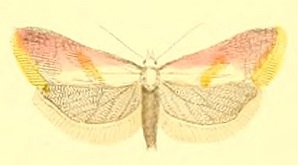
Cochylis flaviciliana, the gold-fringed conch, is a moth of the family Tortricidae. It was described by Westwood in 1854. It is found in most of Europe and north-western Africa. The habitat consists of chalky grasslands.

Cochylis pallidana, the sheep's-bit conch, is a moth of the family Tortricidae. It was described by Zeller in 1847.

Commophila aeneana, the orange conch, is a species of moth of the family Tortricidae. It is found in Great Britain, France, Belgium, Luxembourg, the Netherlands, Germany, Austria, Switzerland, Italy and Romania.
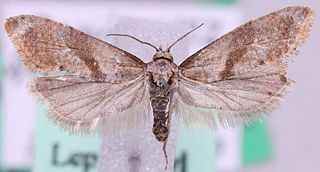
Falseuncaria degreyana, the Breckland conch, is a species of moth of the family Tortricidae. It is found in China (Xinjiang), Mongolia, Russia and most of Europe. The habitat consists of meadows, rural areas, waysides, heathlands, moorlands and farmland.
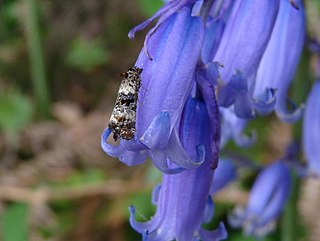
Hysterophora maculosana, the bluebell conch, is a species of moth of the family Tortricidae. It is found from most of Europe, east to the Crimea, Asia Minor and the Palestinian territories. The habitat consists of woodland areas.
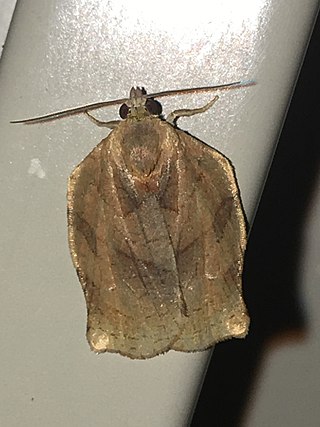
Archips purpuranus, the omnivorous leafroller moth, is a species of moth of the family Tortricidae. It is found in most of eastern North America.
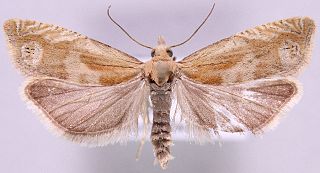
Eucosma hohenwartiana, the bright bell, is a species of moth of the family Tortricidae. It is found in China, Central Asia, North Africa and Europe, where it has been recorded from Sardinia, Sicily, Ireland, Great Britain, Spain, France, Germany, the Benelux, Denmark, Austria, Switzerland, Italy, the Czech Republic, Slovakia, Slovenia, Hungary, Poland, Romania, Bosnia and Herzegovina, Norway, Sweden, Finland, the Baltic region and Russia. The habitat consists of dry open areas and grassland.



















